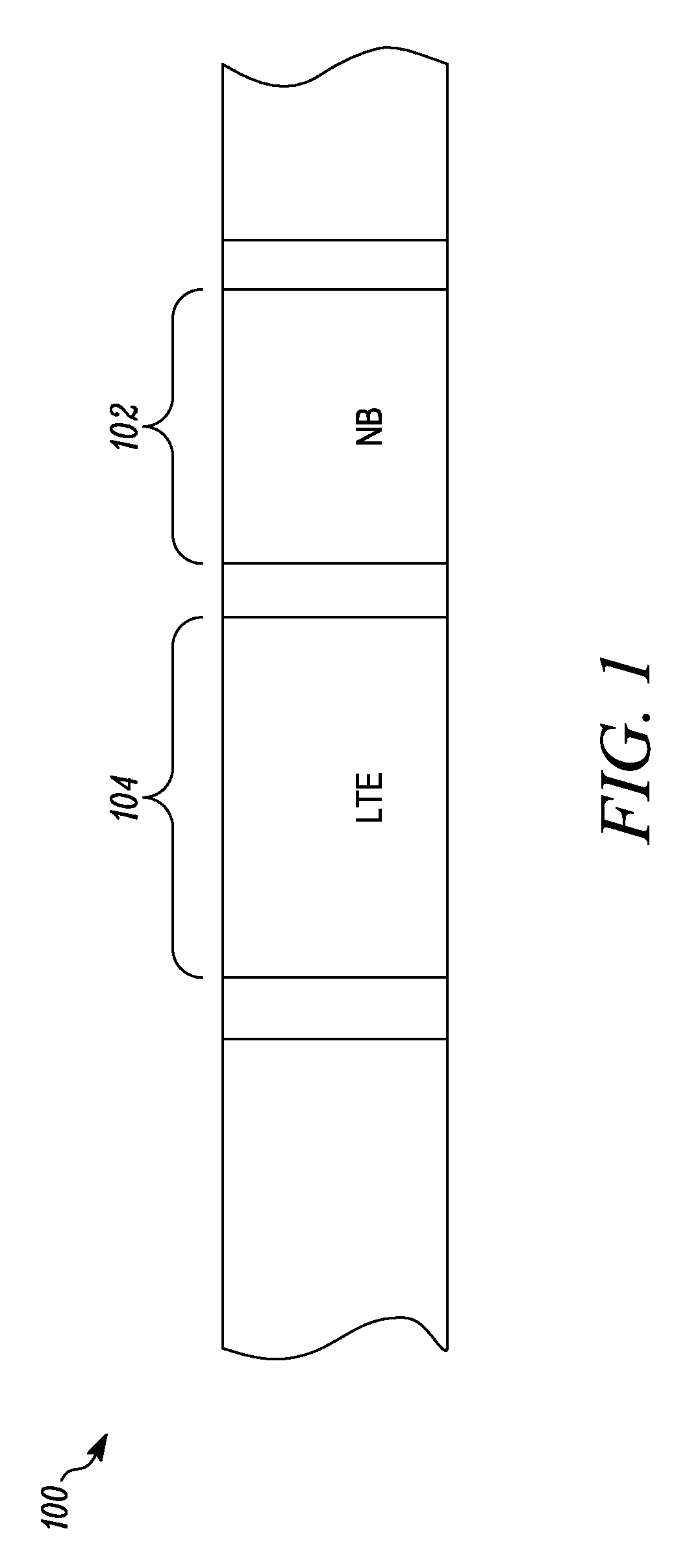Methods and apparatus for mitigating interference between co-located collaborating radios
a technology of co-location and radio, applied in the field of wireless communication base stations and mobile devices, can solve the problems of undesirable radio interference between communications, inability to eliminate oobe completely, and energy from the lte network to leak into the lmr network
- Summary
- Abstract
- Description
- Claims
- Application Information
AI Technical Summary
Benefits of technology
Problems solved by technology
Method used
Image
Examples
Embodiment Construction
[0013]The Federal Communications Commission (FCC) is responsible for allocating the finite radio frequency spectrum among various government entities, cellular telephone and data carriers, and a host of competing corporate and individual interests. In that capacity, the FCC has allocated certain frequency bands for use by and for the benefit of local, state, and national public safety organizations and applications.
[0014]In particular, the frequency band including 799 to 805 megahertz (MHz) and paired with 769 to 775 MHz has been allocated for public safety (PS) narrowband (NB) voice communications by police, fire, and other emergency response teams. These frequencies support “push-to-talk” land mobile radio (LMR) two-way radio devices used by law enforcement agencies across the country.
[0015]The FCC has also designated the frequency band from 793 to 798 MHz and paired with 763 to 768 MHz for broadband public safety transmissions. The FCC has mandated the use of 3GPP Long Term Evolu...
PUM
 Login to View More
Login to View More Abstract
Description
Claims
Application Information
 Login to View More
Login to View More - R&D
- Intellectual Property
- Life Sciences
- Materials
- Tech Scout
- Unparalleled Data Quality
- Higher Quality Content
- 60% Fewer Hallucinations
Browse by: Latest US Patents, China's latest patents, Technical Efficacy Thesaurus, Application Domain, Technology Topic, Popular Technical Reports.
© 2025 PatSnap. All rights reserved.Legal|Privacy policy|Modern Slavery Act Transparency Statement|Sitemap|About US| Contact US: help@patsnap.com



